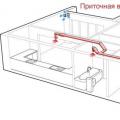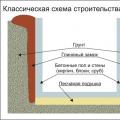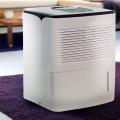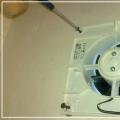More and more of our compatriots are discovering the undoubted advantages of living in their own home, compared to living in a city apartment. With a relatively equal cost of an apartment in the center and a small country house, the latter certainly wins: the absence of noisy neighbors, strange companies under the windows, your own garden and fresh air - these are the simple joys that are sometimes so lacking in the city.
The most popular way to heat private houses is to install your own boiler room.
That's just the possession of a country house is not only a joy, but also a responsibility for a number of issues that the owner of the property did not even think about before. Garbage disposal and wastewater disposal, roof care and facade refreshment, house territory cleaning and other concerns - which were previously handled by special services - now fall entirely on the fragile shoulders of the owner.
A separate big topic is the issue of heating, which usually arises even at the stage of designing and choosing a house structure. For heating a house, it is difficult to choose the most economical way, here you need to correlate a lot of factors and take into account all the pros and cons.
For some, wood-fired heating will be the most economical, others can afford the most inexpensive option - a geothermal installation, in a word, this is a whole science. Let's try to walk on the surface of a huge reservoir of knowledge to get a general idea, and also talk about the rules that help save money with the heating you already have.
Boiler room
The most widespread method of heating a dwelling, known since ancient times, is also well known to everyone, because apartment buildings are heated in this way. If we put aside various know-hows in heating private houses and look at the comparative table, everything becomes clear right away - the boiler will not be able to get a worthy replacement for a long time, and what is the cheapest heating today can be clearly seen in the table.
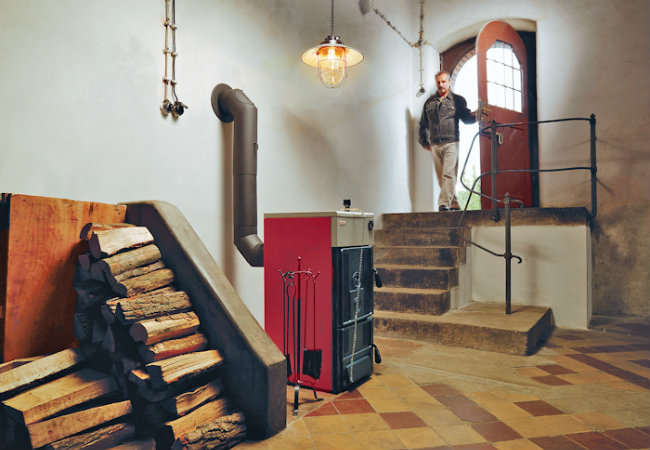
Using a solid fuel boiler is the most economical option, but installing your own boiler room will require a lot of investment.
Looking ahead, we can safely say that firewood is still the most economical home heating.
We deliberately avoid the prices in the table, since this is a variable component, and take the average value, under the same conditions, such as: system capacity, boiler capacity, heating mode and other factors. The percentage can be understood as follows, if we conditionally assume that 100% of the first line equals ten thousand rubles, then 280% of the last will mean twenty-eight thousand costs, all other things being equal.
The conclusion suggests itself: cheap home heating is best provided by a solid fuel wood-fired boiler. It is recommended to arrange a hybrid heating system - where it is possible to connect a pump for accelerated heating, but in the absence of electricity, the system can work due to the laws of physics, that is, by gravity. This approach is the most economical and autonomous.
Remember: when choosing an expansion tank for solid fuel boilers, it is necessary to take a device with a capacity of twenty percent of the total volume of heating networks, since solid fuel boilers create conditions under which pressure increases abruptly.
Electric heating
One of the answers to the question of how to save money on heating a private house can be the installation of electric heating networks, especially if the house is well prepared for such devices, they come in the following varieties:
- Convectors, really cheap heating, which you can do yourself. The device only needs to be mounted on the wall, select the temperature on the controller and plug it into the network. That's all it takes to start heating your home. A good option for dachas and summer houses, however, for permanent heating of a capital house, it is very expensive;
- infrared systems. They are a combination of elements of the PLEN type (film electric heater) and separate heaters. The heating of the premises occurs due to the infrared radiation emitted by the device. The efficiency here is 99%, almost all the energy consumed is spent on heat. At a cost, such systems are also quite affordable and economical to maintain. There is only one thing - they require a high power line and a constant supply of electricity, which can not be obtained everywhere and not always.
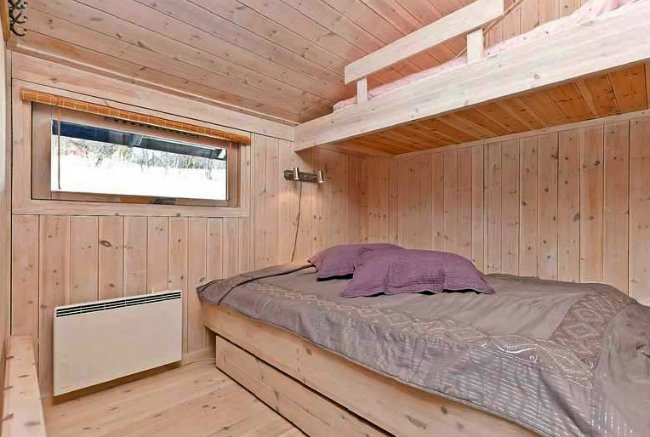
Installing convectors in the house is a very simple way, to use it you only need to install it on the wall and adjust the temperature.
In general, the best option for saving on heating in a private house is still the option of using a solid fuel boiler, however, if we compare the costs of maintaining a boiler room, complying with all SNIPs (sanitary rules) and obtaining permits, as well as installing the entire system - infrared heaters will be more preferable.
This becomes especially relevant when it comes to a small and light building, which is not used constantly, but only as a seasonal summer home.
Electric heating also includes air heating. Such systems, as a rule, are quite complex, include many different devices and are divided into different types of heaters with varying degrees of intensity.
General rules
Profitable heating is not only a heating system and the type of fuel used in it, it is also a general set of measures aimed at keeping the received heat in the house. Correctly performed, the following conditions will lead to the fact that heating savings will become obvious, since the difference in heat energy consumption during optimization in the house can reach up to 30%:
- Thermal insulation of walls. Carefully choose materials for construction, study thermal conductivity tables and follow the installation technology - properly selected materials, including internal and external thermal insulators used in the complex, will significantly reduce the cost of heating a house;
- Actively apply and use thermal curtains with automatic activation, they will help to effectively and efficiently block the cold air from the street from the way to the house, which will help keep it warm;
- Check the thermal insulation of the roof, up to twenty percent of thermal energy goes through it;
- Do not forget to regularly check the house for drafts, cracks and cold bridges and promptly eliminate them. The most common places for cracks to appear are windows and doors at sealing points. A cold bridge can occur in case of leakage and freezing of the walls.
As you can see, there is nothing complicated about this, and the benefits are very, very tangible. Unfortunately, not all homeowners pay enough attention to this issue. If you are faced with the task of heating an already built old house, you can always insulate it from the outside using siding and basalt wool, so there is always an opportunity, you just need to want to find it. Keep your head cold and your feet warm! May your home always be warm and cozy.

